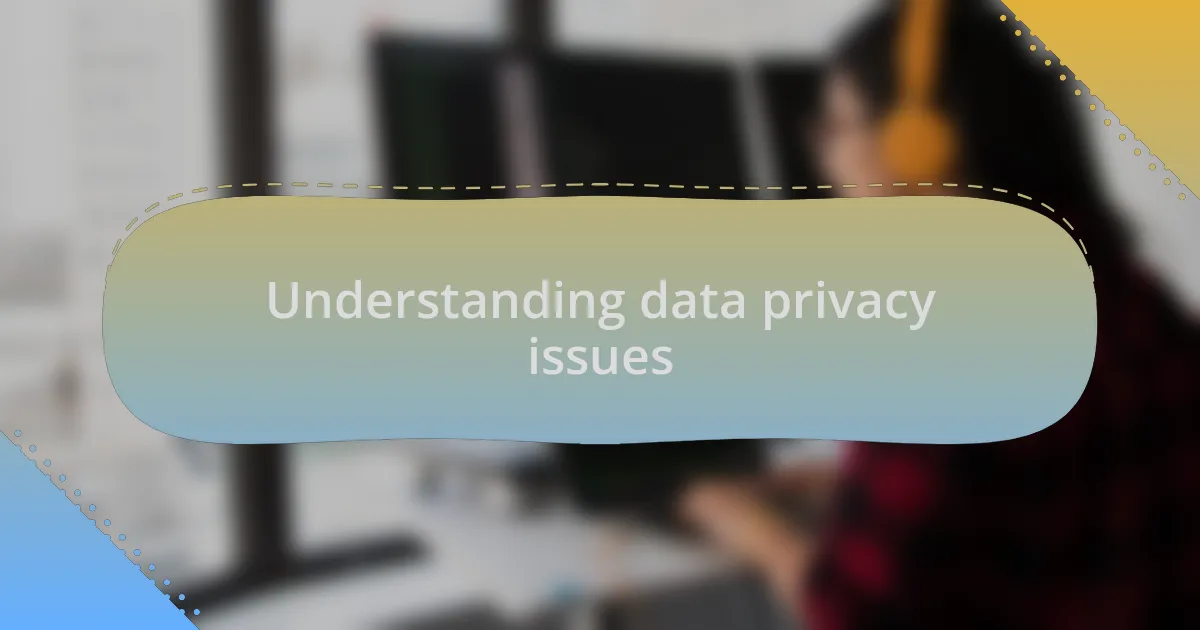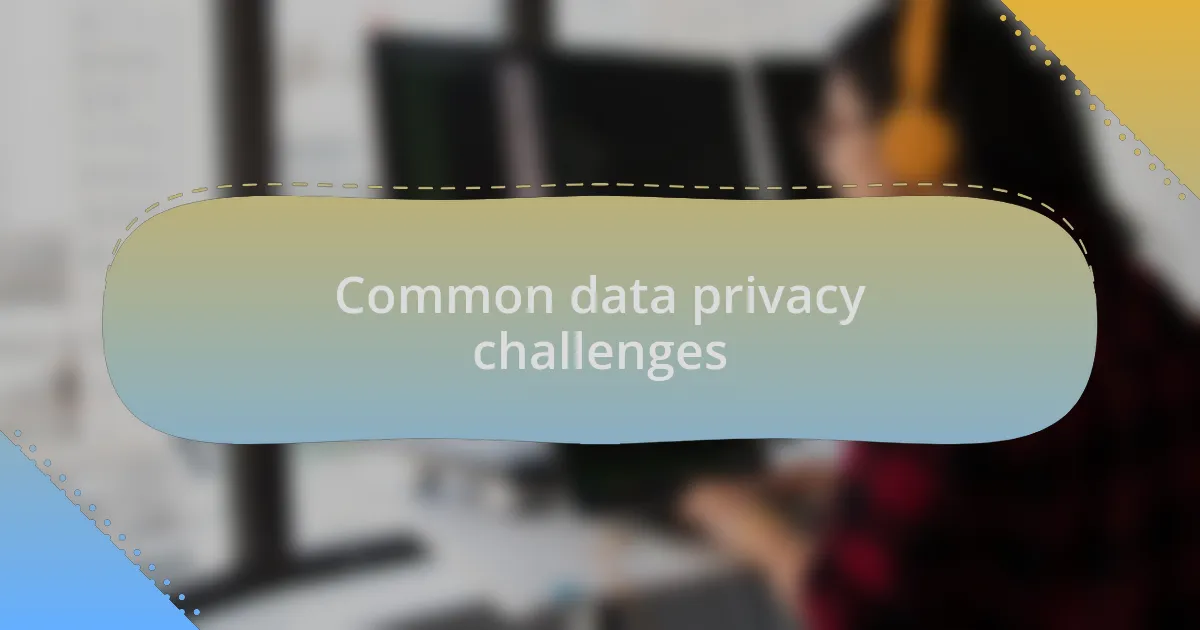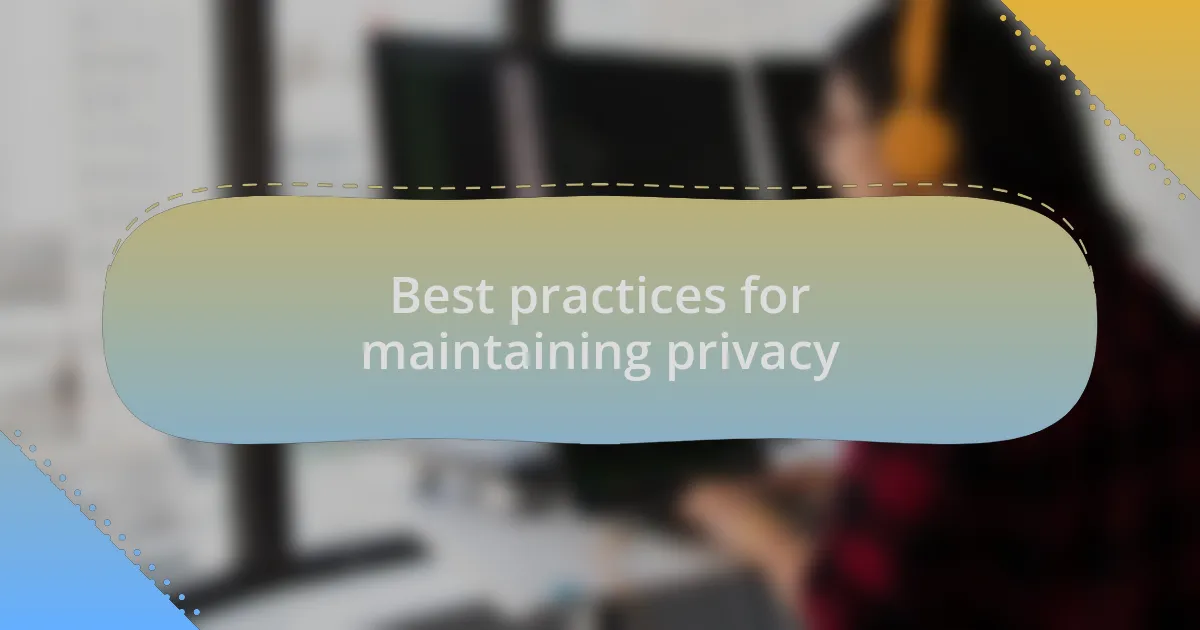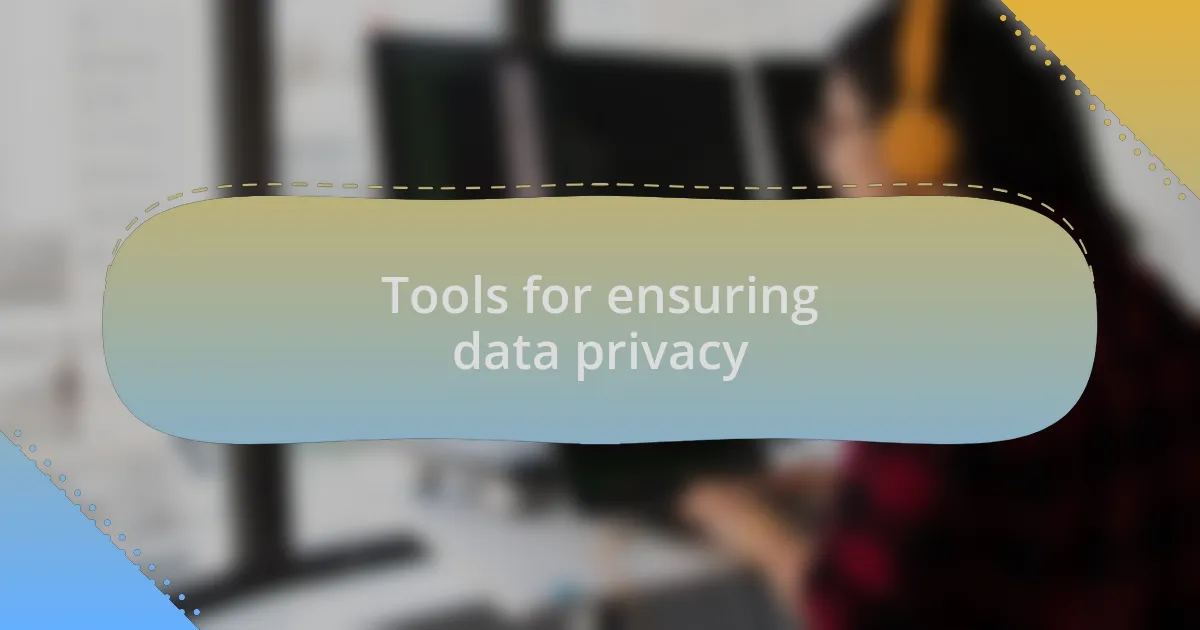Key takeaways:
- Data privacy is a moral responsibility, emphasizing the importance of user trust over mere compliance.
- Common challenges include unclear user consent, managing large volumes of data, and navigating complex regulations like GDPR.
- Best practices involve strong encryption, regular policy updates, and minimizing unnecessary data collection to enhance security and user trust.
- Utilizing tools like VPNs, identity management software, and data masking can significantly improve data privacy and security measures.

Understanding data privacy issues
When I first started working on web projects, I couldn’t grasp the depth of data privacy issues. I remember a moment when a friend shared how their personal information got mishandled by an app they loved. It was a stark reminder that users need to understand how their data is collected, stored, and shared. Can you imagine the anxiety of wondering who is accessing your personal details?
As I delved deeper into programming, I realized that data privacy is not just a technical requirement; it’s a moral responsibility. I often ponder this: how would I feel if my sensitive information was exposed? This question drives me to implement stringent security measures in all my projects. It’s about safeguarding trust, not just compliance.
In today’s digital landscape, the consequences of neglecting data privacy can be significant. A single breach can tarnish a brand’s reputation and lead to financial setbacks. Reflecting on my experiences, I’ve learned that incorporating privacy features from the start is essential. How can we ensure users feel secure when interacting with our applications? It’s all about creating a culture of respect for user data.

Common data privacy challenges
When I think about common data privacy challenges, one that stands out is user consent. Early in my programming career, I built a simple app that collected user data. I was proud, until I learned that users often click “accept” without really understanding what they’re agreeing to. It struck me then how important it is to communicate this clearly, yet many developers skip this step, leading to unintentional violations.
Another challenge is the sheer volume of data we manage. I remember being overwhelmed when I needed to handle sensitive information for a project; the complexity of encrypting, securely storing, and managing access felt daunting. The reality is, as our applications grow, so does the risk if we aren’t vigilant. How do we ensure our systems can adapt without compromising user trust?
Finally, I can’t overlook the evolving regulatory landscape surrounding data privacy, which can be a minefield. During one project, I had to keep up with GDPR changes on the fly, and it was stressful! Navigating these regulations is essential; they aren’t just legal hoops to jump through but meaningful frameworks designed to protect users. Isn’t it curious how these laws can actually guide us towards building better practices?

Best practices for maintaining privacy
One of the best practices for maintaining privacy is implementing strong encryption methods. I recall working on a project where we decided to encrypt user data both in transit and at rest. This decision wasn’t just about compliance; it gave me peace of mind knowing that even if someone managed to intercept our data, it would be virtually useless to them. Have you ever felt that sense of security? It’s irreplaceable.
Another important practice is to regularly review and update privacy policies. I learned this the hard way during a project when our user base grew exponentially. We found ourselves facing questions from users who wanted to know how their data was used, and I felt unprepared to answer. I now make it a point to set reminders to revisit and revise our policies, ensuring clarity and transparency. Users appreciate when they know their data is handled responsibly, don’t you think?
Lastly, minimizing data collection is crucial. In one of my earlier applications, I was eager and collected every bit of data I could think of. Over time, I realized many of those data points were unnecessary and only added to my headaches in terms of compliance. I started asking myself: “What do I really need?” Reducing the data footprint not only simplifies things but also builds trust with users. How liberating is it to focus on just what matters?

Tools for ensuring data privacy
When it comes to tools for ensuring data privacy, one of my go-to solutions is the use of Virtual Private Networks (VPNs). I remember setting up a VPN for a client who frequently worked remotely. It was astonishing to see how much their online activities improved in terms of privacy. Have you ever considered how many eyes are on your internet traffic? With a VPN, sensitive data is encrypted before it even leaves your device, creating an essential barrier against potential snoopers.
Another valuable tool is identity management software, which I encountered while trying to streamline access controls in a previous role. Implementing tools that monitor user identities and access makes a big difference. I was surprised by how quickly we could identify and mitigate risks. Isn’t it reassuring to know that you can manage who has access to what data? It not only enhances security but also equips users with a better understanding of their roles and responsibilities regarding data privacy.
Data masking tools have proven advantageous too, particularly when I was involved in projects that required testing with real data. Using such tools allowed us to maintain the integrity of data while still enabling developers to work efficiently. It was a revelation to learn that sensitive information could be obscured while still allowing for functional testing. How often do you think we overlook simple solutions like this? By masking data, we can protect user identities without sacrificing our ability to innovate and improve systems.